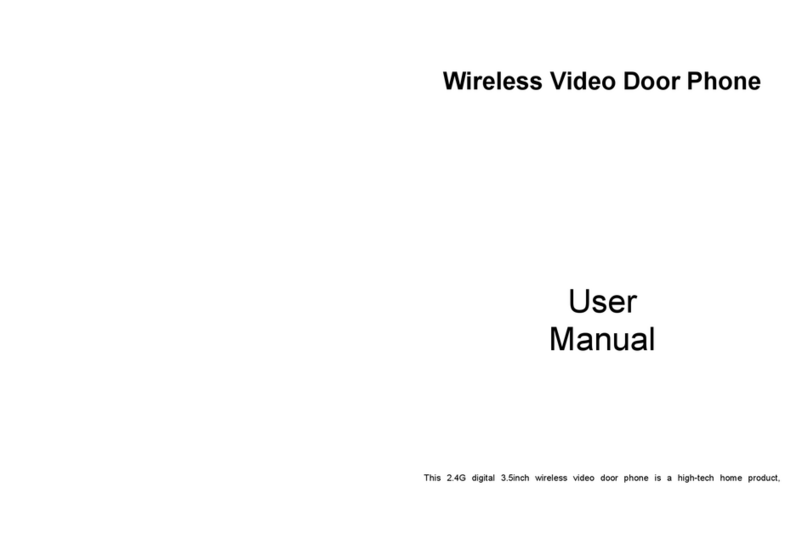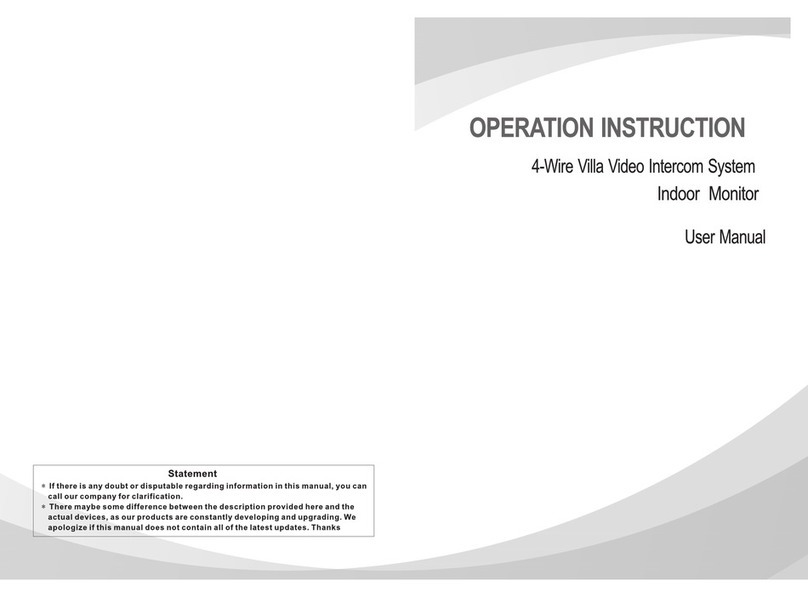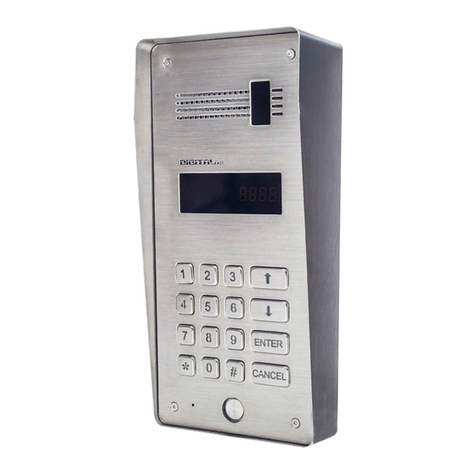Table of Contents
Chapter . About DD-5 00 door phone.........................................................................................................3
. . General features of the DD5 00 Digital Door phone........................................................................3
.2. Dimensions.........................................................................................................................................4
Chapter 2. Components of the System...........................................................................................................6
Chapter 3. Connection of DD-5 00 door phone............................................................................................7
3. . A standard wiring diagram.................................................................................................................7
3.2. Video camera wiring diagram............................................................................................................8
3.3. Door phone connection to the network..............................................................................................8
Chapter 4. Programming menu description................................................................................................. 5
4. . Activation of programming mode:................................................................................................... 5
Leaving programming mode:......................................................................................................... 5
4.2. Programming menu overview.......................................................................................................... 5
4.3. DD-5 00 programming manual.......................................................................................................2
4.3. . Actions with identificators........................................................................................................2
Add a new identificators................................................................................................................2
Add Service identificators.............................................................................................................2
Auto Add function.........................................................................................................................22
Delete identificator........................................................................................................................22
Delete identificator, related to sequence number......................................................................22
Delete identificator, related to user ID......................................................................................22
Delete all identificators from the memory................................................................................22
Delete system identificator, related to sequence number..........................................................22
4.3.2. Actions with codes....................................................................................................................22
Set/change users door unlock code................................................................................................23
Change Service PIN (SPIN) code..................................................................................................23
4.3.3. System settings.........................................................................................................................23
Setting of unlock delay time..........................................................................................................23
Selection of a lock type..................................................................................................................23
Access control settings...................................................................................................................24
Door unlock timer in error case.....................................................................................................24
4.3.4. Volume control..........................................................................................................................24
Indoor volume control...................................................................................................................25
Outdoor volume control.................................................................................................................25
System signals sound control.........................................................................................................25
4.3.5. User (subscriber) administrating..............................................................................................25
Disable...........................................................................................................................................25
Disable a user according to ID..................................................................................................25
Disable a group of users ID.......................................................................................................26
Enable............................................................................................................................................26
Enable a user according to ID...................................................................................................26
Enable a group of users ID........................................................................................................26
4.3.6. Setting of addressing................................................................................................................26
Regular addressing.........................................................................................................................26
Shifted addressing..........................................................................................................................26
Hotel addressing............................................................................................................................27
4.3.7. Network settings.......................................................................................................................27
a) main menu (default configuration – network disabled). ...........................................................28
b) network settings menu for L type configured doorphone. ........................................................28
c) network settings menu for H type configured doorphone.........................................................28
4.3.8. Reset to factory settings............................................................................................................29
Chapter 5. Doorphone net types and configuration.....................................................................................30






























